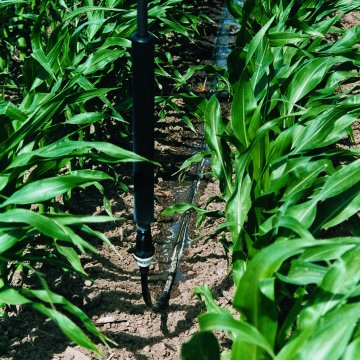Explore our blog featuring articles about farming and irrigation tips and tricks!
Cut Water Losses

By: Tharran Gaines
They say a penny saved is a penny earned, but does that same axiom apply to water losses during irrigation?
Both university and industry experts warn that focusing on just one aspect of a sprinkler system (such as cutting losses to evaporation) could lead to losses elsewhere. Danny Rogers at Kansas State University explains that applied water is lost to the air, off of foliage, by running off the field, and to deep percolation of moisture in the field.
“The two components of air loss are droplet evaporation and water drift,” Rogers explains. “Droplet evaporation is the water that evaporates while in flight from the nozzle and before it reaches the crop canopy or the soil surface. Drift losses are water droplets that move off the field or onto a non-targeted area of the field, usually by wind.”
Recent research has shown that losses to the air are small compared with other potential water losses, provided a pivot has properly designed and operated nozzles. In fact, one study showed that as long as droplet sizes were within normal droplet size range, direct evaporation of water droplets was less than 1% of the discharged water.
CUT LEAF LOSSES
Foliage losses, meanwhile, refer to water that is lost as it sits on plant surface. Interception is water that is caught and held on the plant material surfaces and eventually evaporates into the atmosphere.
To reduce losses in the canopy, you need to employ nozzles that either produce a smaller wetting area (application area) or are placed closer to the canopy. Certainly, positioning nozzles deep into the canopy will also help limit crop interception.
Stay up to date on all T-L news and get alerts on special pricing!


